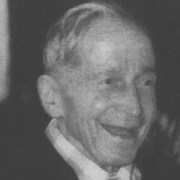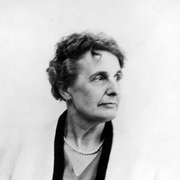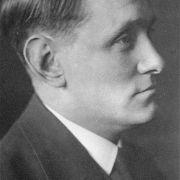Righteous Among the Nations - Jane Haining
“If these children need me in the days of sunshine, how much more do they need me in the days of darkness.”
Jane Haining
Jane Mathieson Haining was born on a farm in Scotland in 1897. She was considered highly intelligent from an early age, and at 12, she won a scholarship to the prestigious Dumfries Academy. After graduating, she moved to Glasgow and started to teach Bible studies to a small class of children in church on Sundays. There, Jane started to take an interest in missionary work and even established a missionary library in church. She learned about missionary work among the Jewish community in eastern and central Europe. She decided that undertaking missionary work around Europe is a goal she was willing to devote her life to.[1]
In 1932, Jane moved to Budapest to lead a class in a Scottish missionary school. Jane loved Hungary and quickly learned and mastered the Hungarian language.[2] Most of the children in the school were orphans, and while most of them were Jewish, there was a small group of Christians. Many testimonies describe Jane as a gentle and compassionate woman who greatly cared for orphaned children. Most of the Jewish children were subjected to prejudice due to their race and Jane dedicated her life to caring for them. [3] [4]
From 1938 to 1939, as the Nazis took over Austria and Czechoslovakia, many Jews escaped to Hungary, and many Jewish children came to the missionary school Jane worked at to find shelter. It was the first time Jane was exposed to the stories of the Jewish refugees. During that time, a massive amount of antisemitic propaganda was published in Hungary, which caused a significant upsurge in hostility towards the Jews. Jane emphasized to the children the importance of being proud of who they are, regardless of their race.[5]
In 1940, fear resided all over Europe after the German army successfully conquered numerous countries. Jane was instructed to return home to Scotland because she might not be able to leave later, but she refused to leave for a safe place while her children were in danger. In 1940, Jane’s school was already housing 224 Jewish children. In a letter to her sister, she wrote:
“If these children need me in the days of sunshine, how much more do they need me in the days of darkness”.[6]
In 1942, Jewish children were given visas without needing to pass the missionary process. The visas stated that they were baptized, so they would have a chance to escape the Nazi prosecution.[7] However, in March 1944, things rapidly became worse. Jews, including Jane’s students, were instructed to always wear the yellow star of David on their clothes.[8]
In April 1944, Gestapo officers arrived at Jane’s school. They searched Jane’s office and bedroom for incriminating evidence and later arrested her. Apparently, the school cook’s son-in-law told the German authorities that Jane was hiding Jewish children because she once caught him stealing her student’s food. While the Gestapo officers took her away, she smiled at her students and told them she would be back soon.[9]
Jane was interrogated and transferred between prisons. Any attempt by the Church and the Swiss legation to save Jane failed. She was accused of multiple violations, among them: that she worked with Jews, that she protested over the fact that her students had to wear a yellow star, that she continued to employ an Arian housekeeper (the Nazi law forbade to employ Aryans were Jews lived), that she listened to the BBC, and that she took part in political activity. Jane admitted to all the accusations, except participating in political activity.[10]
In May 1944, Jane was transferred to Auschwitz-Birkenau.[11] There, the Nazis marked her with the number 79467, and she was sent to forced labor. On July 17th, 1944, Jane died. In her final days, she wrote a letter that expressed her worry to the school and a description of the starvation in the Nazi camp. This letter was sent on July 21st, four days after her death.[12] She wrote:
“Even here on the road to Heaven, there is a mountain road to climb”.[13]
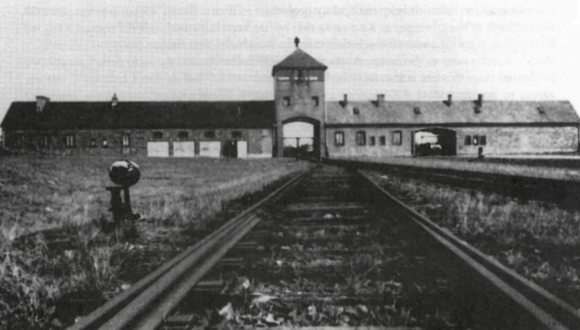
Czech, Danuta. Auschwitz chronicle 1939-1945. London: I. B. Tauris, 1990.
Some believe that when Jane wrote ‘road to Heaven’, she meant what the Nazis ironically called the ‘Heavenly Road’ (Himmelstrasse), the road to the gas chambers. She was only 47 at her death and the only Scottish who died in Auschwitz-Birkenau.[14]
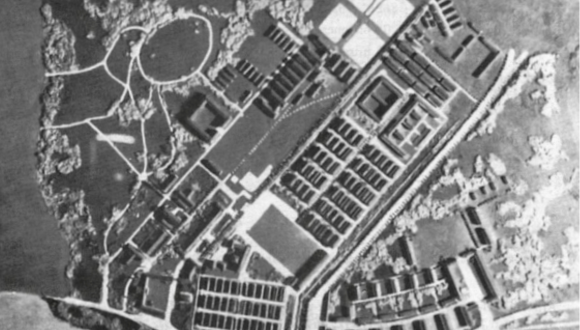
Czech, Danuta. Auschwitz chronicle 1939-1945. London: I. B. Tauris, 1990.
On January 27th, 1997, Yad Vashem recognized Jane Haining as Righteous Among the Nations.[15]
[1] Lyn Smith, Heroes of the Holocaust: Ordinary Britons Who Risked Their Lives to Make a Difference (London: Ebury, 2012), p. 185.
[3] Lyn Smith, Heroes of the Holocaust: Ordinary Britons Who Risked Their Lives to Make a Difference, p. 186.
[5] Lyn Smith, Heroes of the Holocaust: Ordinary Britons Who Risked Their Lives to Make a Difference, p. 188.
[6] Ibid, p. 189.
[7] Ibid, p. 189.
[8] Ibid, p. 190.
[9] Ibid, p. 190.
[10] Ibid, p. 190.
[11] Ibid, p. 191.
[12] Ibid, pp. 192-193.
[13] Ibid, p. 193.
[14] Ibid, p. 193.


